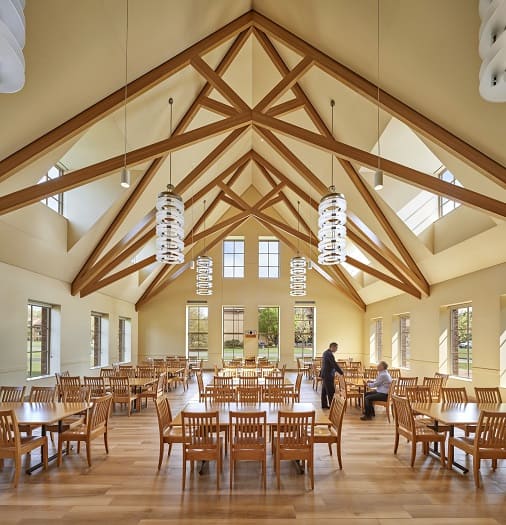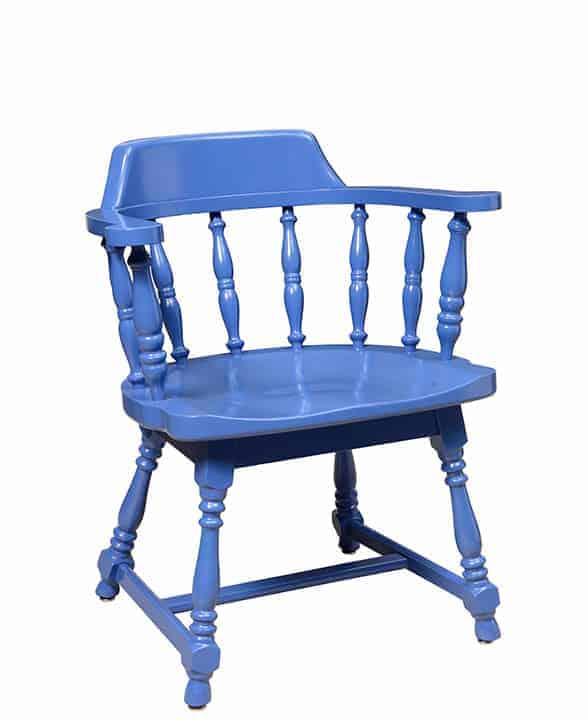Plastic, Wood, or Metal? Which Material is the Most Sustainable?
Sustainability is an important factor when considering which furniture to purchase. Plastic, wood, and metal chairs offer different sustainability factors. Some of these include how to produce the material, by-products, and transportation costs of the material. Let’s examine which material makes for the most sustainable products.
Plastic
To begin with, plastic is not a very sustainable material. One reason is because of the energy needed to produce plastic. Because plastic isn’t naturally occurring, it is chemically made.
Plastics are made of refined crude oil and a variety of other materials mixed with water. The amount of energy needed to make plastic is huge. In fact, 8% of the world’s crude oil goes toward plastic production. Moreover, the energy needed to produce polypropylene plastic (a commission type of plastics used to make larger plastic products) is on average enough to run a fridge for at least three months.
Other than the energy needed to make plastic, the by-products created by producing plastic are extremely harmful. In addition, the physical creation of plastic (the polymerizing of crude oils) is done in industrial complexes that often release massive amounts of pollution themselves. Overall, the by-products created by plastic are extremely harmful to the environment.
Moreover, the life cycle of plastic is not sustainable. Cheaply made plastic furniture will wear down quickly. This leaves people to dispose of the plastics. This is an environmental issue because plastic doesn’t decompose easily. In fact, larger pieces of plastic will take hundreds of years to decompose naturally. Because of this, many plastics end up in landfills and oceans. In landfills, plastics can sink lower in the ground and come in contact with freshwater sources. This is terrible because the decomposing plastics can actually contaminate ground water.
Plastic in the Ocean
As we all know, plastic is very harmful to ocean life. For example, when an animal eats plastic, the chemicals in said plastic can poison the animal. This means that when another animal eats it, it too dies from the poisoned prey.
Additionally, humans have created massive floating “pods” of plastic by dumping garbage into the ocean. These pods unfortunately become habitats for invasive species. This creates further issues with the environment the pod floats into.
Contrastingly, one positive thing about plastic is that is it light. This means that the transportation costs and effect on the environment to move these materials may be less than the costs of transporting woods or metals.
In conclusion, plastic furniture is rather problematic. The entire life cycle of plastic creates environmental risks.
Metal
Similar to plastic, a large amount of energy is needed to get metal from the earth. The process of making metal “from scratch” involves mining. Metals are naturally found as oxides in the earth’s core. Then, refining the oxides into metals occurs in a variety of ways depending on the metal including grinding, heating, and chemical mixes (just to name a few). This process requires an abundance of energy. It also produces a by-product that is dangerous for the environment.
Once made, metals are reusable. People can collect scrap metal and melt the pieces to make new materials. This is a great way to reuse material. However, this no doubt requires different amounts of energy depending on the specific metal.
Unlike plastic, metals can be recycled. To recycle metal, a few different things happen, dependent on the type of metal.
This does make the eco-footprint a bit better for metals compared to plastic.
Wood
Finally, wood is one of the most sustainable products available to make furniture.
To begin, wood is naturally occurring which makes it the most sustainable to harvest out of these three materials. The tools needed to harvest wood professionally certainly aren’t environmentally friendly as they use energy and release carbon dioxide. Additionally, because of the heavy weight of wood, it can create environmental issues to ship this material.
However, the process of drying out wood to make furniture is environmentally friendly. People first air dry it or put it in a kiln. Further, the by-products created by making wood are not nearly as harmful compared to plastic and wood.
Even better, trees take carbon dioxide out of the air. But, as a tree ages, it takes in less carbon dioxide. When loggers harvest wood, they do not release the carbon dioxide back into the air. Therefore, harvesting wood sustainably continuously removes carbon out of the air. Therefore, if harvested sustainably, the renewability of wood is superior to plastic and metal. Trees take on average 10-30 years to grow and high quality made hardwood furniture lasts decades.
Finally, the by-products of making wood furniture are reusable. Some factories (including Eustis Chair) collect sawdust to re-use in a variety of ways.

Sustainable Furniture
Plastic, metal, and wood are materials for furniture. When we examine factors such as how to produce the material, how to transform the materials, and how usable the by-products are, it clear to us that wood is the most sustainable option. While it is a bit heavy to transport, wood is natural and easy to process. Additionally, it continues to hold carbon dioxide when processed and has reusable by-products.
When investing in furniture, don’t only invest in your future, but also the future of our planet. Eustis Chair encourages you to make eco-friendly swaps whenever possible. Reach out today and learn how Eustis Chair can create sustainable hardwood chairs that will last a lifetime.































